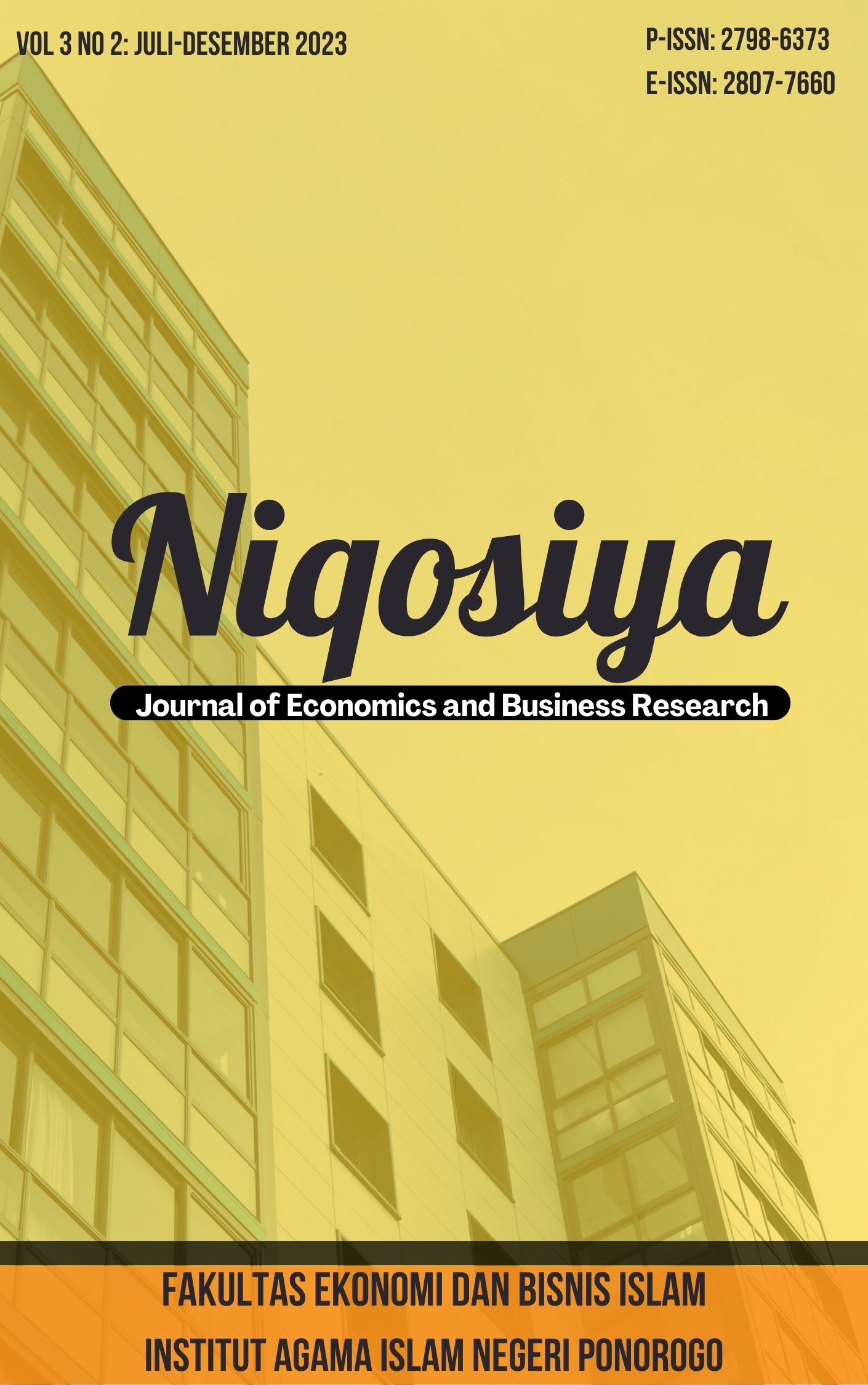Analisis Pengaruh Inflasi, Ekspor, Impor, dan Nilai Tukar terhadap Cadangan Devisa Negara
Abstract
Foreign exchange reserves are essential for assessing a country's financial stability, especially in countries highly dependent on international trade, such as Indonesia. Various economic factors, including inflation, exports, imports and changes in exchange rates, influence Indonesia's foreign exchange reserves. Domestic inflation is essential in determining a country's currency and stability. If inflation is high, the exchange rate will increase, which in turn will impact the size of the country's foreign exchange reserves. Therefore, controlling inflation is essential in maintaining the stability of foreign exchange reserves. Exports and imports also significantly influence a country's foreign exchange reserves. The higher the exports, it shows that the country is more advanced and can generate foreign exchange reserves. Imports are the opposite of exports. The country's foreign exchange reserves are usually used to make payments for import activities. This means that the country's foreign exchange reserves will decrease further if imports are higher. This research uses time series data from 2010 to 2020, so the analysis used is the Error Correction Model (ECM). Based on the research results, it was found that to increase the country's foreign exchange reserves, it is necessary to increase the value of exports and exchange rate stability and reduce the value of inflation.
Downloads
References
Adhitya, B. (2021). Analisis Determinan Cadangan Devisa di Indonesia. Jurnal Ilmiah Universitas Batanghari Jambi, 21(1), 184. https://doi.org/10.33087/jiubj.v21i1.1237
Agustina, & Reny. (2018). Pengaruh Ekspor, Impor , Nilai Tukar, Dan Tingkat Inflasi Terhadap cadangan Devisa Inonesia. E-Journal S1 Ilmu Ekonomi Pembangunan Universitas Mulawarman, 4(2), 61–70.
Arndt, H. W. N. (1991). Ilmu ekonomi : untuk konteks Indonesia.
Dananjaya, I. putu A. B., Jayawarsa, A. A. K., & Purnami, A. A. S. (2019). Pengaruh Ekspor, Impor, Kurs Nilai Tukar Rupian, Dan Tingkat Inflasi Terhadap Cadangan Devisa Indonesia Periode 1999-2018. Warmadewa Economic Development Journal (WEDJ), 2(2), 64–71.
Gandhi, D. V. (2006). Pengelolaan Cadangan Devisa di Bank Indonesia. In Seri Kebanksentralan (Issue 17).
Ginting, A. M. (2017). Analisis Pengaruh Ekspor Terhadap Pertumbuhan Ekonomi Indonesia. Buletin Ilmiah Litbang Perdagangan, 11(1), 1–20. https://doi.org/10.30908/bilp.v11i1.185
Juniantara, P. K., & Budhi, M. K. S. (2012). Pengaruh Ekspor, Impor Dan Kurs Terhadap Cadangan Devisa Nasional Periode 1999-2010. E-Jurnal Ekonomi Pembangunan Universitas Udayana, 1(1), 32–38.
Nachrowi, & Usman, H. (2006). Pendekatan Popular dan Praktis Ekonometrika untuk Analisis Ekonomi dan Keuangan. Lembaga Penerbit Fakultas Ekonomi Universitas Indonesia.
Pamungkas, P. A., Indrawati, L. R., & Jalunggono, G. (2018). 369470-Analisis-Pengaruh-Ekspor-Impor-Inflasi-K-05D2Ff8D. 2.
Restanti, J. A. (2016). MODEL KEYNESIAN NERACA PEMBAYARAN INTERNASIONAL NEGARA INDONESIA TAHUN 2011-2020. Jurnal Ilmu Ekonomi Terapan, 1(2), 88–104.
Sonia, A. P., & Setiawina, N. D. (2016). PENGARUH KURS, JUB DAN TINGKAT INFLASI TERHADAP EKSPOR, IMPOR DAN CADANGAN DEVISA INDONESIA. Correspondencias & Análisis, 15018, 1–23.
Suwarno, I., Wianto Putra, I. M., & Sutapa, I. N. (2021). Pengaruh Inflasi, Nilai Tukar Rupiah (USD), Suku Bunga Dan Ekspor Terhadap Cadangan Devisa Negara Indonesia Tahun 2009-2019. Jurnal Riset Akuntansi Warmadewa, 2(1), 48–53. https://doi.org/10.22225/jraw.2.1.2933.48-53
Copyright (c) 2023 Ika Septiana Windi Antari, Muhammad Kholid Al-Zani, Ilham Antony Saputra

This work is licensed under a Creative Commons Attribution-NonCommercial 4.0 International License.














